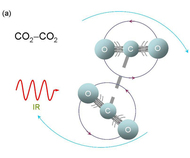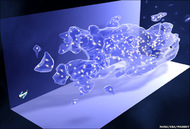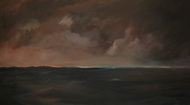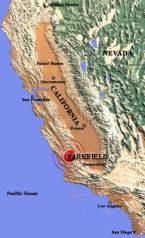An Absorbing Collision
 Thursday, April 24, 2008
Thursday, April 24, 2008 
CO2-collision/absorbtionBelief in global warming, and especially the causes of GW (if one believes the data) depend crucially on modeling. The physics of atmospheric gases-solar radiation interactions, especially those involving carbon-dioxide molecules, is of major importance because the increase of CO2 is often quoted as a correlate to warming. The story is basically that CO2 absorbs some of the infrared radiation (IR) streaming to the earth from the sun, and reflects the rest back.
Just how much is absorbed? The answer to this question is a crucial one. Until recently, the basic physics of light absorption by gas molecules, though pretty well understood, doesn't get the amounts of IR absorption correct for atmospheric CO2. Is this a failure of physics, or the model used?
Get serious. Of course it's not the physics. To paraphrase, it's the model , stupid. Physicists decide what goes into a model, and then the physics (in the form of fundamental laws) takes over, yielding the model prediction.











